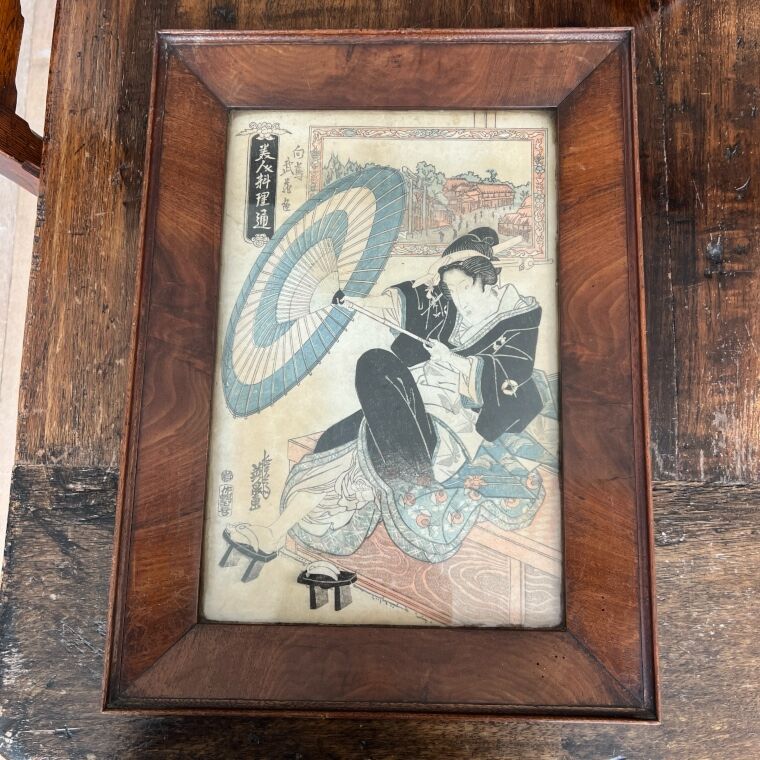Eisen Courtisane with umbrella
Keisai Eisen, oban-tate-e, probably made around 1825, with a simple but beautiful period frame and old glass.
Oban represents the most prevalent size for Japanese woodblock prints, measuring approximately 10 by 15 inches or circa 24.4 by 38 centimeters. Tate signifies the Japanese term for an image in portrait format, while e simply denotes picture.
Keisai Eisen (1790–1848) was a Japanese ukiyo-e artist who specialised in bijin-ga (pictures of beautiful women). His best works, including his ōkubi-e ("large head pictures"), are considered to be masterpieces of the "decadent" Bunsei Era (1818–1830). He was also known as Ikeda Eisen, and wrote under the name of Ippitsuan.
Eisen was born in Edo into the Ikeda family, the son of a noted calligrapher. He was apprenticed to Kanō Hakkeisai, from whom he took the name Keisai, and after the death of his father he studied under Kikugawa Eizan. His initial works reflected the influence of his mentor, but he soon developed his own style.
He produced a number of surimono (prints that were privately issued), erotic prints, and landscapes, including The Sixty-nine Stations of the Kiso Kaidō, which he started and which was completed by Hiroshige. Eisen is most renowned for his bijin-ga (pictures of beautiful women) which portrayed the subjects as more worldly than those depicted by earlier artists, replacing their grace and elegance with a less studied sensuality. He produced many portraits and full-length studies depicting the fashions of the time.
| Width | 35 cm (with frame) |
|---|---|
| Height | 47 cm (with frame) |

